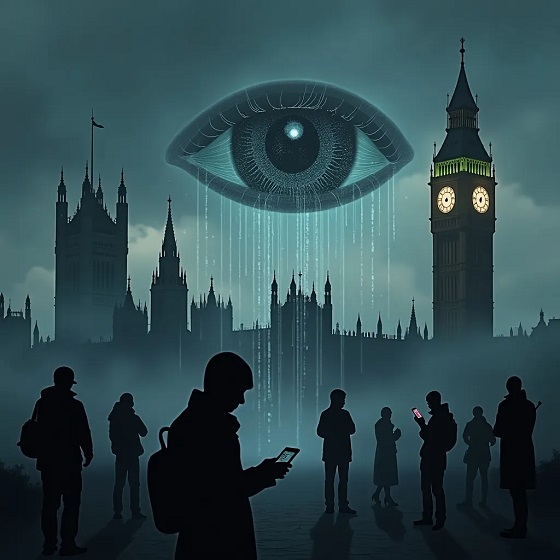armed forces
What A Second World War Aircraft Taught Me About Remembrance Day
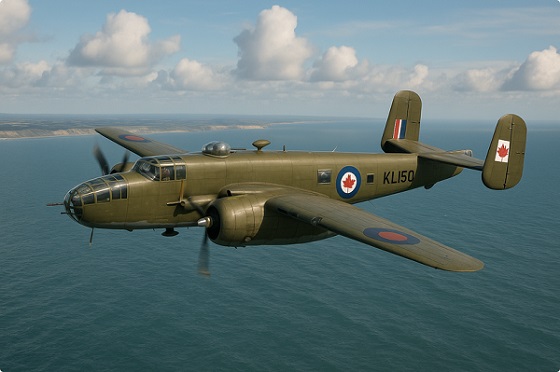
From the Frontier Centre for Public Policy
Sitting inside a B-25 showed me why Remembrance Day isn’t something we can take lightly
Here I was, sitting in the rear gun turret of our Mitchell B-25 bomber, with all my senses on guard and my head on a swivel. The day was clear, the sky could not be bluer, and the danger of enemy fighters coming at us with the sun at their back was almost a certainty.
Luckily, we had just finished our bombing run and were on our way back to base. Our experienced pilot, Major David Rohrer, co-pilot Liam Pearson, and flight engineer Jessica Side had managed to get us to the target unscathed, and we now only had to cross the water to make it home.
Suddenly, Dave had to take evasive action, jerking the plane up and to the right in an almost barrel roll. Cool as cucumbers, the rest of the crew stayed silent as they hung on while I continued to marvel at the incredible manoeuvrability of the B-25.
With 18 machine guns and a full bomb load, the B-25 was a true workhorse. Built in 1945 in Missouri, it showed just how multi-purpose the aircraft could be.
All of this was taking place in Canada last July in the country’s only airworthy B-25 Mitchell, flown out of the Canadian Warplane Heritage Museum in Hamilton, Ontario. The pilot was the museum’s CEO and the crew were volunteers. The target was Niagara Falls, then downtown Toronto (where we flew virtually at the same height as the CN Tower) and the body of water was Lake Ontario..
The experience showed the aircraft’s capabilities, but more importantly, it revealed the challenges faced by Canadian and Allied crews in the Second World War. They worked in noisy, cramped spaces that were too hot in summer and too cold in winter; faced constant danger from enemy aircraft and ground-based flak; dodged fighters and often returned with planes full of holes; flew mission after mission with little rest; and lived with the burden of seeing friends shot down or wounded.
This is what our forefathers went through. This is why we still remember and why we need to continue to honour the generations that came before and who fought for Canada and for our values. The Royal Canadian Air Force was born in 1924, 101 years ago. Its members fought gallantly alongside the Royal Air Force (RAF) and United States Army Air Forces, and many Canadians also flew in RAF and other Commonwealth units.
We owe them a debt that cannot be repaid. All we can do is make sure future generations will remember them, honour them, and stand ready to take their place in the next conflict.
Freedom is not free. It is paid for by the blood of men and women warriors prepared to pick up the torch. Warriors who have no cause except that of freedom, equality, and the protection of all.
As U.S. Army general Douglas MacArthur, who led Allied forces in the Pacific during the Second World War, said, “The soldier above all others prays for peace, for it is the soldier who must suffer and bear the deepest wounds and scars of war.”
This Remembrance Day, and at other times, let us remember and thank those who suffered wounds and scars, but let us also rededicate ourselves to follow their brave example.
Michel Maisonneuve is a retired lieutenant-general who served Canada for 45 years. He is a senior fellow at the Frontier Centre for Public Policy and author of In Defence of Canada: Reflections of a Patriot (2024).
armed forces
Why we keep getting Remembrance Day wrong
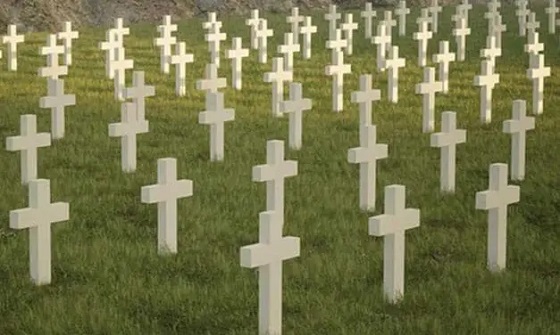
This article supplied by Troy Media.
 By Pat Murphy
By Pat Murphy
Remembrance Day once honoured soldiers for their courage and conviction, but the values they fought for have long since been rejected
With the untimely death of Tim Cook on Oct. 25, Canada lost a valued historian. Military history was Cook’s oeuvre, and the First World War was a particular specialty. His ability to marry academic rigour with accessible storytelling made him a relatively rare bird.
Naturally, Cook wrote about battles, military commanders and political leaders. But he was also fascinated with ordinary soldiers, scouring the archives for personal letters from the front and other material to develop an understanding of what
motivated the soldiers and how they managed the day-to-day horrors of prolonged trench warfare in an environment characterized by cold, mud, lice and rats, not to mention the ever-present spectre of violent death.
Camaraderie was critical. To quote from an interview with Cook: “one of the ways they cope is to create their own tribe, their own group that is insulated from everyone else.”
All of which brings us to Remembrance Day.
Although formally recognized as “remembrance for the men and women who have served, and continue to serve our country during times of war, conflict and peace,” both the origins and iconography of Remembrance Day relate to the First World War. There’s the two-minute silence at the 11th hour of the 11th day of the 11th month to observe the formal end of hostilities in 1918; the playing of the Last Post; and, of course, the ubiquitous red poppies.
The conflict wasn’t post Confederation Canada’s first military endeavour, but its scale dwarfed anything that came before it, and only the subsequent Second World War was a comparable event. Some 620,000 Canadians served between 1914 and 1918 and approximately 60,000 were killed. To get a sense of scale, adjust the fatalities for population growth and it would be comfortably north of 300,000 today.
In War: How Conflict Shaped Us, Margaret MacMillan notes the long history of cultures elevating personal characteristics associated with battlefield success, honouring bravery, endurance, toughness and the willingness to face death. It’s been pretty much a universal characteristic.
Nor should we think of war as only a male activity driven by patriarchal social structures. While it’s true that military hierarchies are traditionally male and the fighting in most wars has been done largely by men, women have always played
a key role in reinforcing the culture.
We, though, have become somewhat uncomfortable with the warrior ethos. Take, for instance, In Flanders Fields. Written in 1915 by Guelph’s John McCrae, the poem has acquired iconic status over the decades. It’s haunting and melancholy, sufficiently so to grab at your throat and send shivers down your spine. It’s also become inextricably intertwined with Remembrance Day.
There is, however, a small problem. While we now view the First World War as senseless carnage, In Flanders Fields has a very different perspective. As the third and final stanza makes unequivocally clear, the poem’s message isn’t about the war’s futility—it’s about the need to keep the faith and carry on to victory.
Much the same can be said about the music associated with the era. Those songs written in recent decades stress the sadness and futility of it all, but the actual popular music of the time was cheerful, patriotic and resolute.
Rather than seeing the soldiers as they were, we insist on recasting them as victims. Stripping them of personal agency, we ignore the fact that 80 per cent of them were volunteers, people who, for various reasons, chose to go to war.
So what motivated them?
Many were surely lured by the male affinity for adventure, compounded by patriotic fervour and enthusiastic loyalty to the concept of king and empire, however incomprehensible or disreputable the latter may now seem to us. There was also the buzz of an environment where the usual social norms regarding life, death and destruction had either vanished or become significantly attenuated. In her book, MacMillan documents how some found the whole experience “vastly exciting.”
Acknowledging this shouldn’t be confused with cheerleading. As I’ve previously written on more than one occasion, I think Britain’s reluctant decision to enter the First World War was a tragic error on many fronts. And if Britain had stood aside, Canada wouldn’t have been involved.
But respectfully remembering those who died shouldn’t be confused with turning them into something they were not. They weren’t hapless victims—they were people with beliefs and values of their own, even if we no longer look at the world in the same way they did.
Troy Media columnist Pat Murphy casts a history buff’s eye at the goings-on in our world. Never cynical – well, perhaps a little bit.
Troy Media empowers Canadian community news outlets by providing independent, insightful analysis and commentary. Our mission is to support local media in helping Canadians stay informed and engaged by delivering reliable content that strengthens community connections and deepens understanding across the country.
armed forces
Recounting the amazing heroics of the ‘Pied Piper’ of Saipan
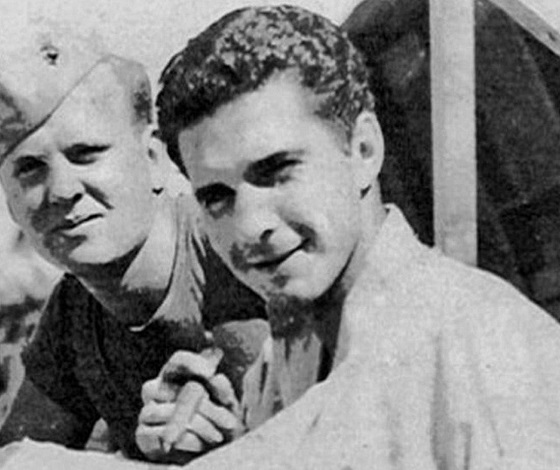
He had learned Japanese on the streets of East LA where he shined shoes as a street-smart kid
It was the summer of 1944, and World War II’s Pacific campaign reached a turning point on the Japanese-occupied island of Saipan.
Soldiers and civilians alike fought to the death to defend it, since U.S. victory there would crack Japan’s outer defences and place American bombers within striking distance of Tokyo.
Fighting became especially brutal and prolonged around Mount Tapotchau, Saipan’s highest peak, and Marines gave battle sites in the area names such as “Death Valley” and “Purple Heart Ridge.”
Desperate Japanese soldiers, trapped with their backs to the sea, had charged into U.S. lines just before dawn, on July 7, 1944.
It would be World War II’s largest Japanese banzai suicide attack, and the bloodiest.
Savage hand-to-hand combat capped three weeks of the crucial, bloody Battle of Saipan that ultimately killed about 5,000 Americans and 23,000 Japanese troops.
Banzai attacks were frantic mass infantry charges, human waves intended to overwhelm an enemy. Often used a last-ditch tactic, they usually resulted in devastating losses.
Nearly all of the 4,000-plus Japanese soldiers in the final suicide charge that day died.
Soon after the 2nd Marine Division and U.S. Army forces landed on Saipan in mid-June 1944, Gabaldon began sneaking into enemy territory at night, mostly alone, to find caves and buildings where the Japanese were hiding.
He caught guards by surprise, shot them if necessary or forced them out with smoke bombs. If that didn’t work, he threatened those inside with flamethrowers he didn’t have. He sometimes held a guard at gunpoint while telling another in Japanese to get those inside to come out to just talk.
He had learned Japanese on the streets of East Los Angeles where he shined shoes as a street-smart kid. He moved in with two friends, first-generation Japanese American brothers, and learned the language and culture from their family.
Shortly after the family was forced into a Japanese American internment camp, Gabaldon, just 17, joined the Marines. Knowing Japanese helped get him in.
The first time Gabaldon sneaked out past enemy lines, he returned with two prisoners. Threatened with court-martial and chastised for acting like a prima donna, he still went on the hunt the next night and returned with 52 more.
Seeing that he was getting results, his commanding officers gave their blessing to their “lone wolf” to keep it up.
Once he started the late-night hunts, Gabaldon said, he could not let up. Taking more prisoners than any American in any war became his “driving ambition,” he wrote in his book, hoping to surpass World War I hero Alvin York, who had captured 132.
Many of them were armed, leaving Gabaldon in a dicey spot at times.
“It was either convincing them that I was a good guy, or I would be a dead Marine within a few minutes,” he said.
He promised the desperate and wounded soldiers and civilians food, water and medical care. America’s top military brass, he told them, did not want to kill or hurt them—and would return them to Japan after the war.
He chatted to his prisoners about their families and hometowns. (His nickname among other Marines? “Gabby.”)
He told them about having lived with a Japanese American family whom he loved. He shared his American cigarettes. Within an hour, 50 or so more came over the crest of the cliffs. Hundreds more followed.
After shocked Marines saw the white skivvy flag, they sent reinforcements to help corral all the prisoners and bring them back to base.
All told, he single-handedly convinced some 800 enemy combatants, instilled with the code of “death before surrender,” to emerge from hiding and give themselves up.
Earning him the nickname “the Pied Piper of Saipan.”
All the more amazing, because of the Japanese military’s strict Bushido code that made soldiers honour-bound to show unwavering loyalty to their nation and their emperor by taking their own lives rather than to surrendering to a wartime enemy.
One of Japan’s commanding generals on Saipan, Yoshitsugu Saitō, committed ritual suicide in a cave not long after the failed banzai attack. Many combatants threw themselves — as well as local Japanese civilians — off a steep cliff.
“Thank God I got 1,000 of them out alive,” he said in an interview with the University of Texas Voces Oral History Center.
When Gabaldon was awarded the Navy Cross in 1960, the Navy and Marine Corps’ second-highest honor, Secretary of the Navy William B. Franke cited his “extreme courage and initiative” in entering enemy caves, buildings and pillbox guard posts amidst hostile fire to capture “well over 1,000” troops and civilians.
His exploits, the secretary wrote, contributed to America’s success and “a definite humane treatment of civilian prisoners was assured.”
Gabaldon’s military days ended when bullets hit his right arm in an ambush back on Saipan in 1945.
In 1960, his exploits on Saipan hit movie screens in Hollywood’s Hell to Eternity, an embellished script with 6-foot-tall blue-eyed Jeffrey Hunter playing the 5-foot-4 Mexican American from East L.A.
— with files from History.com
THE MAKICHUK REPORT is free today. But if you enjoyed this post, you can tell THE MAKICHUK REPORT that their writing is valuable by pledging a future subscription.
You won’t be charged unless they enable payments.
-

 armed forces1 day ago
armed forces1 day agoIt’s time for Canada to remember, the heroes of Kapyong
-

 Daily Caller2 days ago
Daily Caller2 days agoMcKinsey outlook for 2025 sharply adjusts prior projections, predicting fossil fuels will dominate well after 2050
-

 Business2 days ago
Business2 days agoTrump: Americans to receive $2,000 each from tariff revenue
-

 Business1 day ago
Business1 day agoCarney’s Floor-Crossing Campaign. A Media-Staged Bid for Majority Rule That Erodes Democracy While Beijing Hovers
-

 Housing2 days ago
Housing2 days agoTrump advancing 50-year mortgage to help more Americans buy homes
-

 Business16 hours ago
Business16 hours agoLiberals refuse to disclose the amount of taxpayer dollars headed to LGBT projects in foreign countries
-
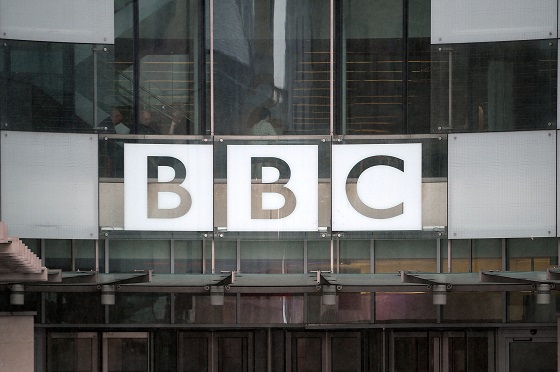
 International2 days ago
International2 days agoBBC boss quits amid scandal over edited Trump footage
-

 Daily Caller8 hours ago
Daily Caller8 hours agoUS Nuclear Bomber Fleet Shares Fence With Trailer Park Linked To Chinese Intel-Tied Fraudster






